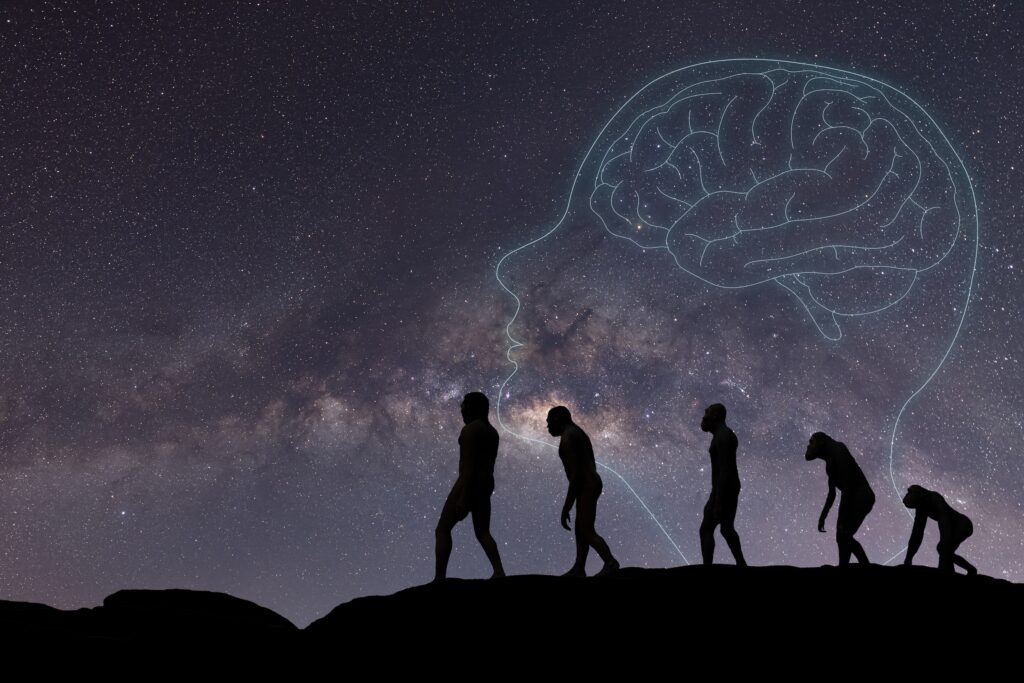A subjective world can still be real (The Return of Idealism)
Reading | Metaphysics
![]() Prof. Paul Franks, PhD | 2024-03-31
Prof. Paul Franks, PhD | 2024-03-31

Philosophers since Descartes have questioned whether our experience reflects a reality outside of our minds. In this essay, Prof. Franks argues that the basic insight of Kant’s approach—perspectivism—harmonizes better with our ordinary experience of the world, and with Einstein’s relativistic physics, than Berkeley’s immaterialist view. This is the sixth instalment of our series, The Return of Idealism, produced in partnership with the Institute of Art and Ideas (IAI). It has first been published by the IAI on 19 Match 2024.
For all I know on the basis of my current experience alone, I could be living in the matrix instead of inhabiting the mind-independent world. My experience could seem just as it seems right now, but it could be caused by something other than the mind-independent world in which I take myself to perceive and act. This familiar thought may be motivated by consideration of dreams, as it was for Descartes, or by more contemporary reflections on virtual reality. From this thought, many philosophers have inferred that what I perceive at any given moment is always and only mind-dependent, an inner world. Kant calls this empirical or material idealism: the objects we experience, the material causes of our sensations, are not real. It seems to lead to a sceptical worry: how can I know that I don’t inhabit the matrix: a virtual or ideal reality, with an opaque causal ground? Both Berkeley’s immaterialist idealism and Kant’s empirical realism offer ways out of the matrix. But Kant’s solution does what Berkeley’s cannot: it vindicates the everyday world in which we determine the sequence of our thoughts in time by means of mind-independent objects and events.
According to what has come to be called Berkeley’s master argument, there is no way to think the idea that terms such as “mind-independent reality” purport to express.
But say you, surely there is nothing easier than to imagine trees, for instance in a park, or books in a closet, and no one to perceive them. I answer, you may do so, there is no difficulty in it, but what is all this, I beseech you, more than framing in your mind certain ideas which you call books and trees, and at the same time omitting to frame the idea of any one that may perceive? . . . you have the power of imaging or framing ideas in your mind: but it doth not show that you can conceive them existing unconceived or unthought of, which is a manifest repugnancy. (Principles of Human Knowledge, sec. 23)
On its own, this argument seems fallacious. Perhaps, as Bertrand Russell suggested, Berkeley is confusing “idea” as act, which is mental, with “idea” as object of mental activity, which may not be mental. Others have suggested other fallacies.
But the argument should not be taken on its own. It needs supplementation by Berkeley’s account of idea formation and usage, roughly equivalent to what we would now call semantics. In his critique of Locke’s account of abstract ideas, Berkeley says in effect that ideas are sensible images, and that images are always concrete and determinate. To be sure, we use general words, such as “human” or “thing,” but we do not thereby signify indeterminate ideas, as Locke had suggested. Instead, we use words in general ways: I have formed concrete ideas of images of many humans, and I may now use the word “human” to signify any and all of them. There is no need to posit monstrosities such as Locke’s idea of a triangle that has no determinate angles or lengths of sides.
Now let us apply this rejection of Lockean abstraction to the term “mind-independent reality.” No idea can occur in the mind without my perceiving it. To separate ideas from mental awareness is no less absurd than the separation of triangle-images from determinacy of side and angle. Since we can attach no meaning to the sceptical worry that mind-independent reality is entirely different from what we perceive, we should stop worrying about it.
So what do we mean, according to Berkeley, when we think or talk about everyday objects, like the famous tree falling in the forest with nobody around? We refer, he suggests, to reliable patterns of perceptions. If I say that the tree’s fall makes a sound when nobody perceives it, I mean that, if somebody were to be there, they would perceive it. As a theist—indeed, a bishop of the Church of Ireland—Berkeley thinks that God guarantees the reliability of the patterns, although God can modify it when desirable, which explains miracles. (There are significant difficulties with the view—known today as phenomenalism—that objects are what J. S. Mill called “permanent possibilities of perception”, especially without theism, but those are for another day.)
This view goes along with Berkeley’s instrumentalism about natural science. In late antiquity, astronomy was distinguished from terrestrial physics. Terrestrial physics was realistic, dealing with mind-independent dispositions to motion. But the heavens were so remote that celestial physics lay beyond human comprehension, and astronomy was therefore nothing more than a mathematical model: an instrument for prediction using epicycles and other devices to which no reality could be accorded. In the early modern scientific revolution, thinkers such as Copernicus, Galileo and Newton aspired to a fully realistic physics, involving laws of motion and real forces operative both on earth and in the heavens. But Berkeley went in the other direction. He rejected the idea of a realistic, explanatory physics. Instead he understood all physics in terms of models with instrumental use only.
Berkeley’s way out of the matrix retains empirical idealism: what I perceive at any given moment is always and only mind-dependent. One of Kant’s major arguments—the Refutation of (Empirical) Idealism—offers another off-ramp. The argument is that I can have an inner, mental life only if I also have a life of perceptual engagement with the external, mind-independent world. It turns on what Kant calls time-determination.
I determine my inner, mental life in time insofar as I assign temporal sequence to, say, the parts of a thought, or the steps in an argument. If I had only the capacity to assign temporal order to my mental acts, then I could not check or correct my order assignments at all. But I can check and correct my order assignments, because I situate them within an objective temporal sequence that involves the external world. I determine objective time by perceiving regular change, such as the motion of clock hands, against a stable background, such as a clock-face. If my assignments of before and after to my subjective acts can be right or wrong, this can only be because I can also situate them within objectively determined time, and I can determine objective time only because I can perceive both relative motion and relative rest outside me in mind-independent objects. When I think of myself as having one thought before another, I am implicitly thinking of myself as being able to determine when in objective time I had those thoughts, so I am implicitly thinking of myself as perceiving a world beyond the mind.
Consequently, to think of myself as merely dreaming, or as trapped in the virtually real matrix, is to think of myself from a perspective outside the dream or the matrix—to think of myself as inhabiting mind-independent reality. It may be true that, for all I know, I am dreaming or in a matrix at the present moment. But this does not entail that there is no perceivable mind-independent world of the sort I take there to be.
Empirical realism is what Kant calls the resultant position that I can directly perceive the mind-independent objects of experience. But he famously argues that empirical realism is sustainable only if one also accepts transcendental idealism: the view that, although the objects of experience are perspectival, and appear to us in virtue of the spatio-temporal form of human sensibility, this does not impugn the mind-independence of the underlying material causes of sensation, any more than the fact that I can see the River Hudson only through a window partly occluded by a tree, means that the river is partly occluded in itself.
Kant’s own arguments for transcendental idealism are closely interwoven with his commitment to the mathematics and physics of his day. In light of the development of non-Euclidean geometry shortly after his death, and the application of non-Euclidean geometry in relativity theory a century later, Kant’s arguments for transcendental idealism have not aged well. Nevertheless, the basic insights of transcendental idealism—that human cognition is perspectival and, indeed, always involves taking a perspective, which is a human activity even if it is one of which we are usually unaware—still ring true. In fact, the very fact of scientific revolution, illustrated by the shift from classic to relativistic physics, deepens the point, because we are now inclined to say, not that there is one immutable human perspective, but that there can be several, which underlines the involvement of human activity, since we not only take perspectives, we change perspectives. Taking a perspective, as Kant was the first to insist, involves the active determination of a material world in which we can determine time. Relativity theory radicalizes this brilliant insight by introducing multiple perspectives from which time may be determined distinctly. But, even with this revision, time determination necessarily involves the material world external to the individual. So the world is both transcendentally ideal—relative to an actively taken perspective—and also empirically real.
Kant’s combination of transcendental idealism and empirical realism harmonizes far better with our ordinary experience of the world, and with the enterprise of natural science, than Berkeley’s combination of phenomenalism and instrumentalism. If you are looking for a way out of the matrix, I suggest you take Kant’s rather than Berkeley’s.

Essentia Foundation communicates, in an accessible but rigorous manner, the latest results in science and philosophy that point to the mental nature of reality. We are committed to strict, academic-level curation of the material we publish.
Recently published
Reading
Essays
Seeing
Videos
Let us build the future of our culture together
Essentia Foundation is a registered non-profit committed to making its content as accessible as possible. Therefore, we depend on contributions from people like you to continue to do our work. There are many ways to contribute.















